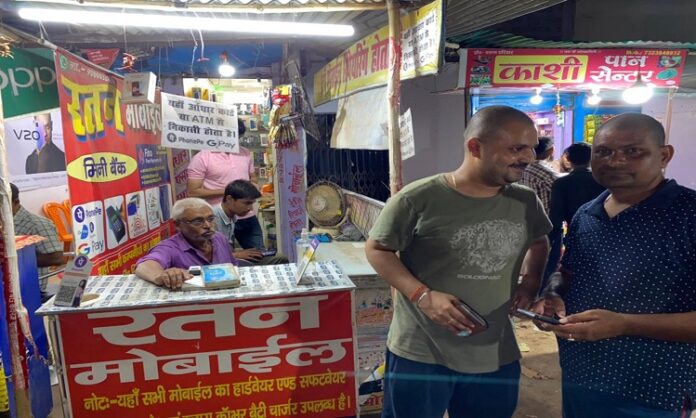Mumbai: Uneven monsoons, slugging demand recovery and higher interest rates have impacted the loan repayment by retail borrowers and small traders in rural areas. The stress in rural economic scenario came to light when lenders complained about the issues in timely repayment of loans.
The difficulties in getting timely return on their investment in the countryside have made both banking and non-baking sectors to exercise extreme caution in lending. Officials of various financial institutions including State Bank of India (SBI), Bajaj Finance, Cholamandalam Finance, and L&T Finance have hinted that oversupply of credit and higher indebtedness might complicate their miseries in getting the loan back.
Also Read: UIDAI adds new security feature to curb fraud in AEPS
Officials of Bajaj Finance said that they are exercising caution in dealing with rural consumers, which has acquired a risky proportion now. The rural B2C (business-to-consumer) business has led to muted growth in the first quarter. The non-banking financial company (NBFC) is taking pre-emptive actions to safeguard its balance sheet, they said.
Bajaj Finance managing director Rajeev Jai said, “As of now, we are watching for and acting in a manner to stay out of trouble and still remain in the game.”
Chief executive of L&T Finance Dinanath Dubhashi also echoed similar views saying that he saw the fault lines in loans to first-time borrowers of unsecured credit and in the less-than ₹50,000 category of unsecured loans.
Also Read: ‘Mini Banks’ thrive in rural Bihar, as banks & ATM turn unreliable
However, banking sector experts believe that there was no need for panicky as of now. “Of course, there are stress in some pockets, but the scenario is not that bleak. A few micro-markets that have seen a lending spree and over-leveraging. Next segment to closely watch is SME (small and medium enterprises)—everyone is gung-ho on the SME space, and we will have to see how they witness a downturn in the economic cycle,” said an expert.
Lenders, however, said they were grappling with recovery issues not only in agriculture and personal loan segments, but also in micro, small, and medium enterprise (MSME) portfolios. “Small businesses are typically more vulnerable to changes in the external environment and rate changes. Their loans are mostly linked to external benchmarks like the repo rate, which has increased 250 basis points (bps) since May 2022, affecting repayment capability,” said an official of NBFC.
Also Read: Bihar industry body seeks special package for state to thrive
Some of the experts stated that MSME loans have historically been more susceptible than other segments. The Central government has resorted to the Emergency Credit Line Guarantee Scheme (ECLGS) scheme, moratorium, and debt recasts from time to time to correct the loan segments, but MSMEs still looked more vulnerable.
The government-backed ECLGS was rolled out to support small businesses during the covid-19 outbreak and later extended to other covid-hit sectors. The scheme ended on 31 March. To be sure, small businesses reported stronger asset quality in FY23 as their gross bad loan ratio declined from 9.3% in March 2022 to 6.8% in March 2023. However, one-sixth of accounts and one-twentieth of the amount disbursed soured in FY23, according to the Reserve Bank of India (RBI).
Also Read: Bihar: Panchayati Raj-Urban Deptt face-off likely over revenue sharing
In the June quarter, SBI posted higher slippages—fresh bad loans—worth ₹7,659 crore against ₹3,185 crore in the preceding three months. The bank’s special mention accounts (SMA) one and two—or loans which have not been repaid in 31 to 90 days—rose from ₹3,260 crore in the March quarter to ₹7,221 crore in the June quarter, but the bank said it has already regularized about ₹1,500 crore till the end of July. SBI chairman Dinesh Khara told reporters that stress is emanating from small business and agriculture segments.
Analysts said that the SBI extends unsecured personal loans as well, but mostly to state or central government employees with stable salaries, and therefore, has not seen stress here.
“It does appear that rural demand has not yet picked up based on commentaries from companies that have declared their financial results. Companies were expecting Q1 of this year to be better than Q4 of the last fiscal, but this has now been deferred to the festive season,” said Madan Sabnavis, chief economist at Bank of Baroda.
Lenders concerns, however, can not be dismissed easily as rural consumption has remained subdued, as evident in the declining number of two-wheeler and farm tractor sales. That apart, according to data compiled by Care Ratings, rainfall distribution has also been uneven, leading to a lag in Kharif sowing. While states in north-west and central India witnessed above-normal rainfall, eastern India remains deficient.




